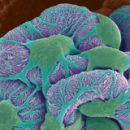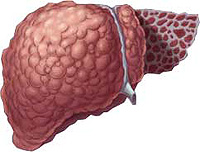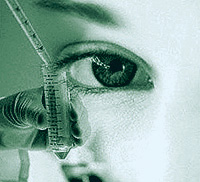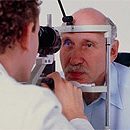How the postcholycistectomic syndrome is manifested? Symptoms are determined by the nature of the dysfunction of the sphincter ODDI, but abdominal pain, dyspepsia and signs of digestive impairment invariably accompany postcholycistectomic syndrome. Diagnosis and clinical picture of this state - in the article.
Content
- Postcholecistectomic syndrome — Symptoms that cannot be ignored
- Postcholecistectomic syndrome: diagnostics
 Unfortunately, the removal of the gallbladder with a gall-name illness does not always allow to talk about full recovery. After cholecystectomy, the likelihood of the formation of stones is maintained, often the dysfunction of the sphincter is apparent — Zhoma regulating the arrival of bile from the gall duct in the duodenum. In parallel with this, it may be difficult to discharge the pancreatic juices, which leads to a violation of digestion. The pathology of the bile exchange affects the state of the intestinal microflora and provokes excess bacterial growth, in 10-30% of patients after the operation develops post-olecistectomic syndrome (PCEC) or, as more correctly, the Sphinteer dysfunction.
Unfortunately, the removal of the gallbladder with a gall-name illness does not always allow to talk about full recovery. After cholecystectomy, the likelihood of the formation of stones is maintained, often the dysfunction of the sphincter is apparent — Zhoma regulating the arrival of bile from the gall duct in the duodenum. In parallel with this, it may be difficult to discharge the pancreatic juices, which leads to a violation of digestion. The pathology of the bile exchange affects the state of the intestinal microflora and provokes excess bacterial growth, in 10-30% of patients after the operation develops post-olecistectomic syndrome (PCEC) or, as more correctly, the Sphinteer dysfunction.
Postcholecistectomic syndrome — Symptoms that cannot be ignored
How the postcholycistectomic syndrome is manifested? Symptom number one is pain arising in the classic version of the right in the field of hypochondrium and accompanied by dyspepsia phenomena, that is, nausea and even vomiting.
When developing such a disease, as postcholycistectomic syndrome, symptoms depend on the nature of the work of the Sphinteer's work.
- Biliary type of PCPs is characterized by the predominance of bile current disorders. The increase in the tone of the sphincter is approved in the part that regulates the selection of bile in the intestines, leads to an increase in pressure inside the total bile duct and hepatic bile ducts, to their expansion and appearance of pain in the epigastrium and the right hypochondrium, in the back, right collar, shovel, accompanied by nausea and vomit.
- PCRACTIC Type of PCPs develops when the pathological process involves the part of the Sphinteer Oddi, which regulates the release of pancreatic juices in the duodenum. For this type of PHES typical pain in the right hypochondrium, arising without obvious reasons that gives back and decreased when tilting the body forward.
- The mixed type of PCPs is manifested by hazing pain.
Pohs pain attacks can be weak and strong, continue on average 20 minutes, often provoked by the reception of oily food and alcohol, can develop at night hours. About PCPs It is customary to speak if the pain syndrome arises constantly within 3 or more months after the operation and cannot be associated with other concomitant diseases.
That besides pain accompanies post-goostectomic syndrome? The diagnosis of this state always implies an assessment of the state of digestion, since the second largest complaint with PCPs is intestinal disorders, in particular irritable bowel syndrome and inflammatory processes of its mucous membrane.
The irritable bowel syndrome is manifested by periodic pain and discomfort in the abdomen, flatulence, diarrhea, or constipation, imperative urges for defecation, a sense of incomplete intestinal emptying and other unpleasant sensations.
Excessive growth of intestinal bacterial microflora, accompanying PCPE, leads to the development of duodenitis, enteritis, colitis.
Postcholecistectomic syndrome: diagnostics
 In addition to the assessment of the clinical picture of such a disease, such as post-olecistectomic syndrome, the diagnosis of this state includes laboratory instrumental and hardware research methods.
In addition to the assessment of the clinical picture of such a disease, such as post-olecistectomic syndrome, the diagnosis of this state includes laboratory instrumental and hardware research methods.
Biochemical blood test identifies signs of violation of bilirubin exchange and pancreatic pathology. With biliary type of PCPs, there is an increase in the bilirubin in the blood, with pancreatic type — The activity of the pancreas enzymes increases, and the laboratory signs of the PCPs are most pronounced in the first 6 hours after pain.
Provocative tests are held to clarify the nature of the pathology. Ultrasound of the abdominal organs reveals the expansion of bile ducts, an increase in the diameter of pancreatic ducts, especially clearly when conducting dynamic observation after loading breakfast.
An important element of the non-invasive diagnosis of PCEC is a computed tomography of the gastrointestinal tract, among invasive diagnostic methods, endoscopic retrograde cholangiopancopyography occupies a special place. The most informative in terms of the assessment of the function and state of the sphincter is apparently, direct pressure gauge is considered, but not all clinics have such possibilities.









